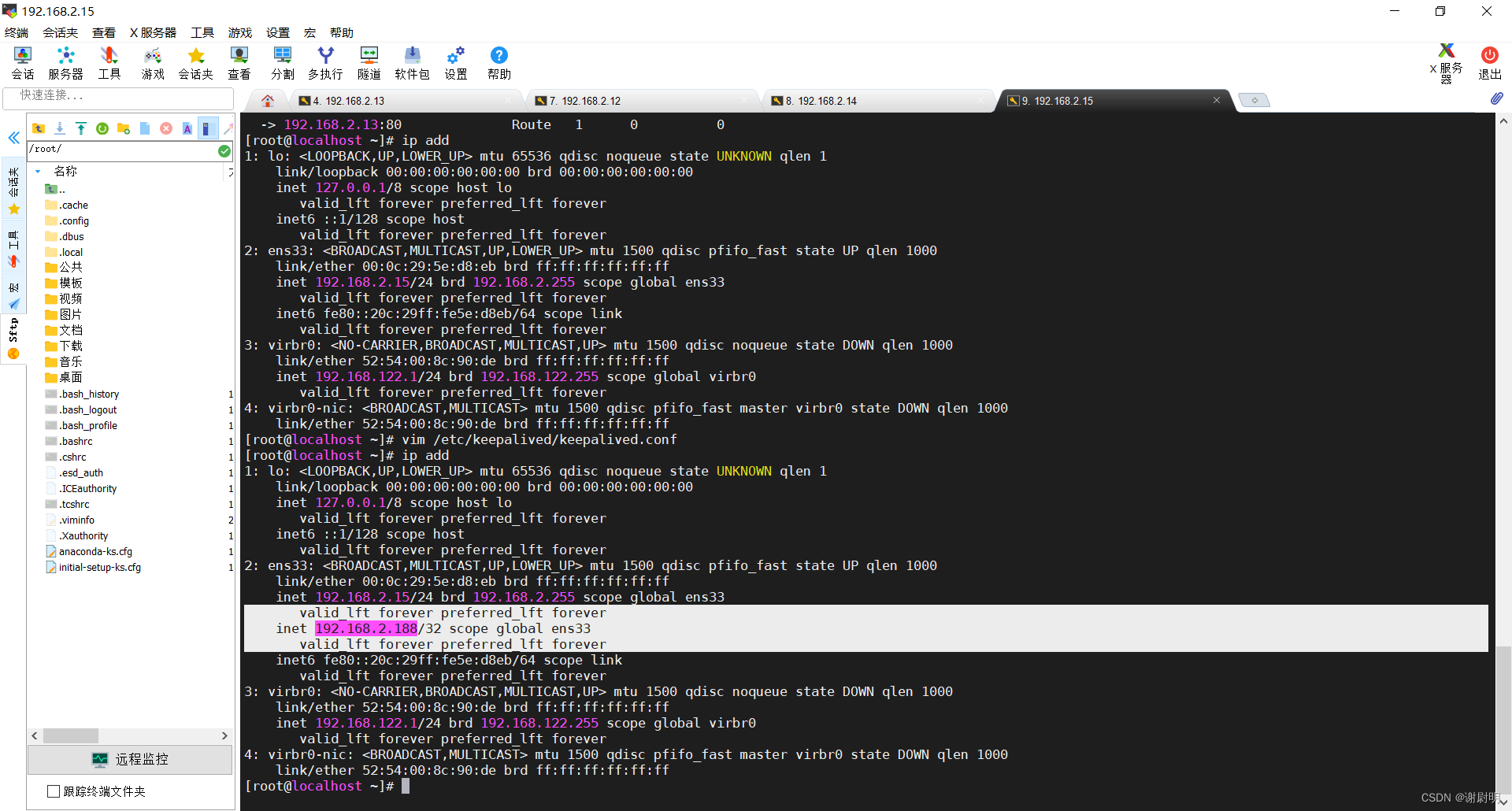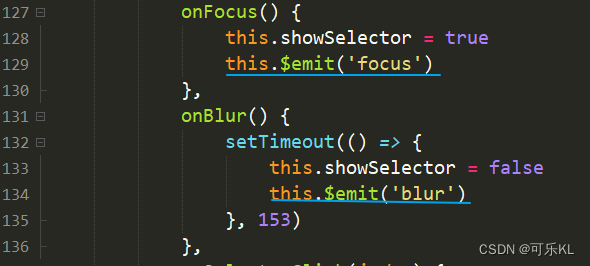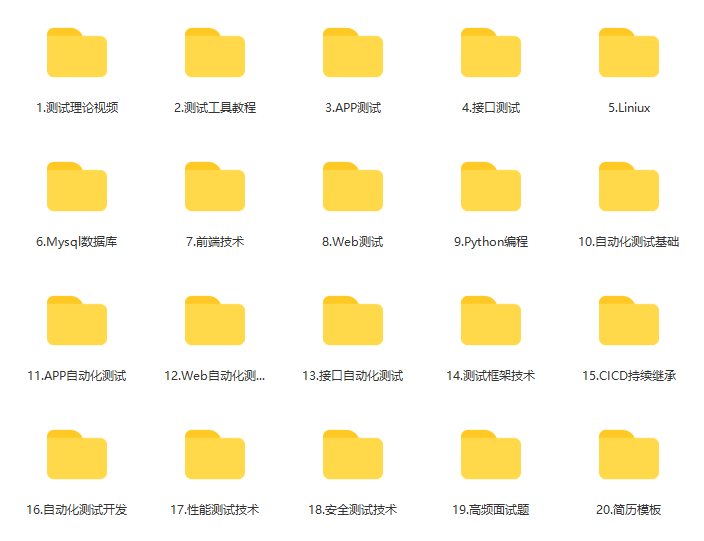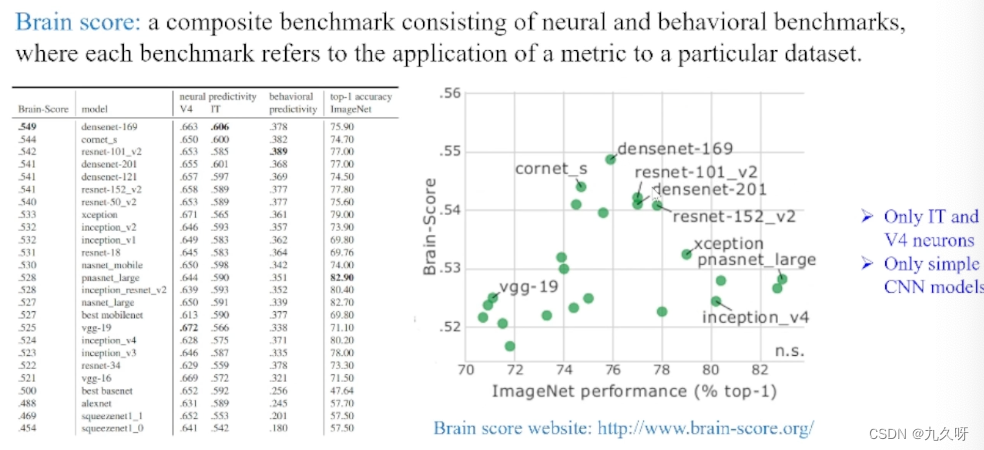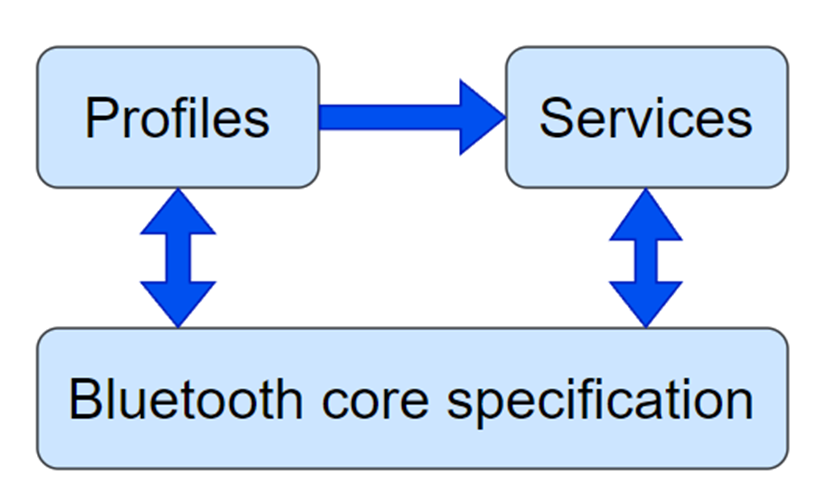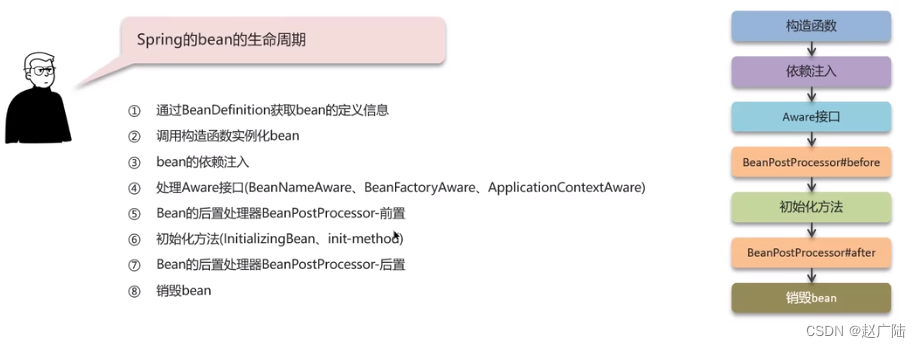文章目录
- 一、list 类的模拟实现

list 是一个带头双向循环链表,可以存储任意类型
模板参数 T 表示存储元素的类型,Alloc 是空间配置器,一般不用传
一、list 类的模拟实现
iterator 和 const_iterator 除了下述不同外,其他代码基本一模一样:
- iterator 调用 operator* / operator-> 返回 T& / T*
- const_iterator 调用 operator* / operator-> 返回 const T& / const T*
为了减少代码冗余,创建一个公有的模板,并增加两个模板参数,在调用时通过传递不同的模板参数从而得到 iterator 和 const_iterator
reverse_iterator 和 const_reverse_iterator 通过封装 iterator 实现
list 类常用接口模拟实现:
//test.cpp
#include "list.h"
int main()
{
//starrycat::list_test5();
starrycat::list_reverse_iterator_test();
return 0;
}
//iterator.h
#pragma once
namespace starrycat
{
template<class Iterator, class Ref, class Ptr>
class __list_reverse_iterator
{
typedef __list_reverse_iterator<Iterator, Ref, Ptr> self;
public:
__list_reverse_iterator<Iterator, Ref, Ptr>() {}
__list_reverse_iterator<Iterator, Ref, Ptr>(Iterator iter) : _cur(iter) {}
//rbegin() 底层返回 end(),rend() 底层返回 begin()
//因此在访问元素时,需要访问当前迭代器的前一个位置
Ref operator*()
{
Iterator tmp = _cur;
return *--tmp;
}
Ptr operator->()
{
Iterator tmp = _cur;
return (--tmp).operator->();
}
self& operator++()
{
--_cur;
return *this;
}
self operator++(int)
{
Iterator tmp = _cur;
--_cur;
return tmp;
}
self& operator--()
{
++_cur;
return *this;
}
self operator--(int)
{
Iterator tmp = _cur;
++_cur;
return tmp;
}
bool operator==(const self& s) { _cur == s._cur; }
bool operator!=(const self& s) { _cur != s._cur; }
private:
Iterator _cur;
};
}
//list.h
#pragma once
#include "iterator.h"
#include <iostream>
#include <assert.h>
#include <algorithm>
using std::cout;
using std::endl;
namespace starrycat
{
//带头双向链表结点
template<class T>
struct __list_node
{
__list_node<T>* _prev;
__list_node<T>* _next;
T _data;
};
//迭代器
template<class T, class Ref, class Ptr>
struct __list_iterator
{
typedef __list_node<T> node;
typedef __list_iterator<T, Ref, Ptr> self;
//成员
node* _node;
//默认构造函数
__list_iterator<T, Ref, Ptr>()
{}
//构造函数
__list_iterator<T, Ref, Ptr>(node* node)
: _node(node)
{}
//解引用重载
Ref operator*()
{
return _node->_data;
}
//->重载都需要这样玩
Ptr operator->()
{
return &(_node->_data);
}
//前置++重载
self& operator++()
{
_node = _node->_next;
return *this;
}
//后置++重载
self operator++(int)
{
self tmp(*this);
_node = _node->_next;
return tmp;
}
//前置--重载
self& operator--()
{
_node = _node->_prev;
return *this;
}
//后置--重载
self operator--(int)
{
self tmp(*this);
_node = _node->_prev;
return tmp;
}
bool operator==(const self& s) const
{
return _node == s._node;
}
bool operator!=(const self& s) const
{
return _node != s._node;
}
};
//带头双向链表
template<class T>
class list
{
public:
typedef __list_node<T> node;
typedef __list_iterator<T, T&, T*> iterator;
typedef __list_iterator<T, const T&, const T*> const_iterator;
typedef __list_reverse_iterator<iterator, T&, T*> reverse_iterator;
typedef __list_reverse_iterator<const_iterator, const T&, const T*> const_reverse_iterator;
void empty_Init()
{
_head = new node;
_head->_next = _head;
_head->_prev = _head;
}
//默认构造函数
list()
{
empty_Init();
}
//迭代器区间构造
template<class InputIterator>
list(InputIterator first, InputIterator last)
{
empty_Init();
while (first != last)
{
push_back(*first);
++first;
}
}
void swap(list<T>& lt)
{
std::swap(_head, lt._head);
}
list(const list<T>& lt)
{
empty_Init();
list<T> tmp(lt.begin(), lt.end());
swap(tmp);
}
list<T>& operator=(list<T> lt)
{
swap(lt);
return *this;
}
~list()
{
clear();
delete _head;
_head = nullptr;
}
void clear()
{
iterator it = begin();
while (it != end())
{
it = erase(it);
}
}
iterator begin()
{
return iterator(_head->_next);
}
const_iterator begin() const
{
return const_iterator(_head->_next);
}
iterator end()
{
return iterator(_head);
}
const_iterator end() const
{
return const_iterator(_head);
}
reverse_iterator rbegin()
{
return end();
}
const_reverse_iterator rbegin() const
{
return end();
}
reverse_iterator rend()
{
return begin();
}
const_reverse_iterator rend() const
{
return begin();
}
bool empty() const
{
return _head->_next == _head;
}
size_t size() const
{
size_t result = 0;
node* cur = _head->_next;
while (cur != _head)
{
++result;
cur = cur->_next;
}
return result;
}
T& front()
{
return _head->_next->_data;
}
const T& front() const
{
return _head->_next->_data;
}
T& back()
{
return _head->_prev->_data;
}
const T& back() const
{
return _head->_prev->_data;
}
void push_front(const T& x)
{
//node* _head_next = _head->_next;
//node* new_node = new node;
//new_node->_data = x;
//_head->_next = new_node;
//new_node->_prev = _head;
//new_node->_next = _head_next;
//_head_next->_prev = new_node;
insert(begin(), x);
}
void pop_front()
{
//assert(!empty());
//node* del = _head->_next;
//node* _head_new_next = del->_next;
//_head->_next = _head_new_next;
//_head_new_next->_prev = _head;
//delete del;
erase(begin());
}
void push_back(const T& x)
{
//node* tail = _head->_prev;
//node* new_node = new node;
//new_node->_data = x;
//tail->_next = new_node;
//new_node->_prev = tail;
//new_node->_next = _head;
//_head->_prev = new_node;
insert(end(), x);
}
void pop_back()
{
//assert(!empty());
//node* del = _head->_prev;
//node* new_tail = del->_prev;
//new_tail->_next = _head;
//_head->_prev = new_tail;
//delete del;
erase(--end());
}
iterator insert(iterator pos, const T& x)
{
node* cur = pos._node;
node* prev = cur->_prev;
node* new_node = new node;
new_node->_data = x;
prev->_next = new_node;
new_node->_prev = prev;
new_node->_next = cur;
cur->_prev = new_node;
return pos;
}
iterator erase(iterator pos)
{
node* del = pos._node;
node* prev = del->_prev;
node* next = del->_next;
prev->_next = next;
next->_prev = prev;
delete del;
return next;
}
private:
node* _head;
};
void Print1(const list<int>& lt)
{
list<int>::const_iterator it = lt.begin();
while (it != lt.end())
{
//(*it) *= 10;
cout << *it << " ";
++it;
}
cout << endl;
for (auto e : lt)
{
cout << e << " ";
}
cout << endl;
}
void list_test1()
{
list<int> lt;
lt.push_back(1);
lt.push_back(2);
lt.push_back(3);
lt.push_back(4);
list<int>::iterator it = lt.begin();
while (it != lt.end())
{
(*it) *= 10;
cout << *it << " ";
++it;
}
cout << endl;
for (auto e : lt)
{
cout << e << " ";
}
cout << endl;
Print1(lt);
}
struct A
{
int _a1;
int _a2;
//构造函数
A(int a1 = 0, int a2 = 0)
: _a1(a1)
, _a2(a2)
{}
};
void Print2(const list<A>& lt)
{
list<A>::const_iterator it = lt.begin();
while (it != lt.end())
{
//it->_a1 *= 2;
//it->_a2 *= 2;
cout << it->_a1 << " " << it->_a2 << endl;
++it;
}
cout << endl;
}
void list_test2()
{
list<A> lt;
lt.push_back(A(1, 1));
lt.push_back(A(2, 2));
lt.push_back(A(3, 3));
lt.push_back(A(4, 4));
list<A>::iterator it = lt.begin();
while (it != lt.end())
{
//cout << (*it)._a1 << " " << (*it)._a2 << endl;
//-> 都需要这样玩
//it->_a1 编译器默认解释为 it->->_a1 <==> it.operator->()->_a1;
it->_a1 *= 10;
it->_a2 *= 10;
cout << it->_a1 << " " << it->_a2 << endl;
++it;
}
cout << endl;
Print2(lt);
}
void list_test3()
{
list<int> lt;
cout << "empty:" << lt.empty() << endl;
cout << "size:" << lt.size() << endl;
lt.push_front(1);
lt.push_front(2);
lt.push_front(3);
lt.push_front(4);
for (auto e : lt)
{
cout << e << " ";
}
cout << endl;
cout << "empty:" << lt.empty() << endl;
cout << "size:" << lt.size() << endl;
lt.pop_front();
lt.pop_front();
//lt.pop_front();
//lt.pop_front();
//lt.pop_front();
for (auto e : lt)
{
cout << e << " ";
}
cout << endl;
lt.push_back(1);
lt.push_back(2);
lt.push_back(3);
lt.push_back(4);
for (auto e : lt)
{
cout << e << " ";
}
cout << endl;
lt.pop_back();
lt.pop_back();
//lt.pop_back();
//lt.pop_back();
//lt.pop_back();
//lt.pop_back();
for (auto e : lt)
{
cout << e << " ";
}
cout << endl;
lt.front() *= 10;
lt.back() *= 100;
for (auto e : lt)
{
cout << e << " ";
}
cout << endl;
}
void list_test4()
{
list<int> lt;
lt.push_back(1);
lt.push_back(2);
lt.push_back(3);
lt.push_back(4);
for (auto e : lt)
{
cout << e << " ";
}
cout << endl;
//list<int>::iterator pos = std::find(lt.begin(), lt.end(), 2); err
lt.insert(++lt.begin(), 20);
for (auto e : lt)
{
cout << e << " ";
}
cout << endl;
lt.erase(++lt.begin());
for (auto e : lt)
{
cout << e << " ";
}
cout << endl;
}
void list_test5()
{
list<int> lt1;
lt1.push_back(1);
lt1.push_back(2);
lt1.push_back(3);
lt1.push_back(4);
for (auto e : lt1)
{
cout << e << " ";
}
cout << endl;
list<int> lt2(lt1.begin(), lt1.end());
for (auto e : lt1)
{
cout << e << " ";
}
cout << endl;
list<int> lt3(lt2);
for (auto e : lt3)
{
cout << e << " ";
}
cout << endl;
lt3.clear();
for (auto e : lt3)
{
cout << e << " ";
}
cout << endl;
lt3 = lt2;
for (auto e : lt2)
{
cout << e << " ";
}
cout << endl;
for (auto e : lt3)
{
cout << e << " ";
}
cout << endl;
}
void Print3(const list<int>& lt)
{
list<int>::const_reverse_iterator rit = lt.rbegin();
while (rit != lt.rend())
{
//*rit *= 2;
cout << *rit << " ";
++rit;
}
cout << endl;
}
void Print4(const list<A>& lt)
{
list<A>::const_reverse_iterator rit = lt.rbegin();
while (rit != lt.rend())
{
//rit->_a1 *= 10;
//rit->_a2 *= 10;
cout << rit->_a1 << " " << rit->_a2 << endl;
++rit;
}
cout << endl;
}
void list_reverse_iterator_test()
{
list<int> lt;
lt.push_back(1);
lt.push_back(2);
lt.push_back(3);
lt.push_back(4);
list<int>::reverse_iterator rit = lt.rbegin();
while (rit != lt.rend())
{
*rit *= 2;
cout << *rit << " ";
++rit;
}
cout << endl;
Print3(lt);
list<A> ltA;
ltA.push_back(A(1, 1));
ltA.push_back(A(2, 2));
ltA.push_back(A(3, 3));
ltA.push_back(A(4, 4));
list<A>::reverse_iterator ritA = ltA.rbegin();
while (ritA != ltA.rend())
{
ritA->_a1 *= 10;
ritA->_a2 *= 10;
cout << ritA->_a1 << " " << ritA->_a2 << endl;
++ritA;
}
cout << endl;
Print4(ltA);
}
}


